As a training officer, you want to make your drills as realistic as possible. Performing drills gets your firefighters ready for an actual incident by training “muscle memory.” After watching a few Fire Engineering Training Minutes videos, I wanted to piece them together into one flowing drill. What these drills educate you on can be employed during fire operations or overhaul. I have personally used these skills on fires, and I have had the firefighters that drilled on these skills come back after a call and tell me they used these skills. They are effective and represent another tool in the mind’s toolbox.
- Realistic Vent-Enter-Search Training
- USING PROPS, SIMULATORS, AND MOCKUPS FOR MORE REALISTIC TRAINING
- REALISTIC TRAINING WITH LIMITED RESOURCES
- Mike Ciampo: The Punch Technique
The one video that I wanted to show the company members was a YouTube video, “The Punch Technique,” by Mike Ciampo. The punch technique moves much more drywall out of the way with less energy than just hitting the wall randomly. This method can not only be used for walls but also for ceilings and gaining access to the attic. I designed a prop that incorporated a wall and a ceiling to perform the punch method in training. (See photo 1.) The builder of the prop is Ronnie Amoreillo.
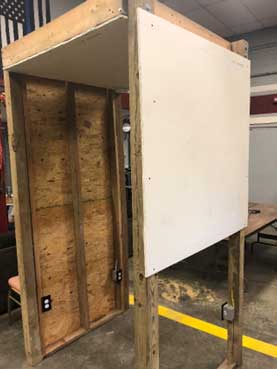
The first step is to explain the drill and review the prop with the company. I then showed them the Fire Engineering videos of the skills that we would be performing. Then the firefighters attempt to make a hole in the dry wall the way they learned in the academy and then punch a hole using the punch technique. (Photos 2 and 3.)

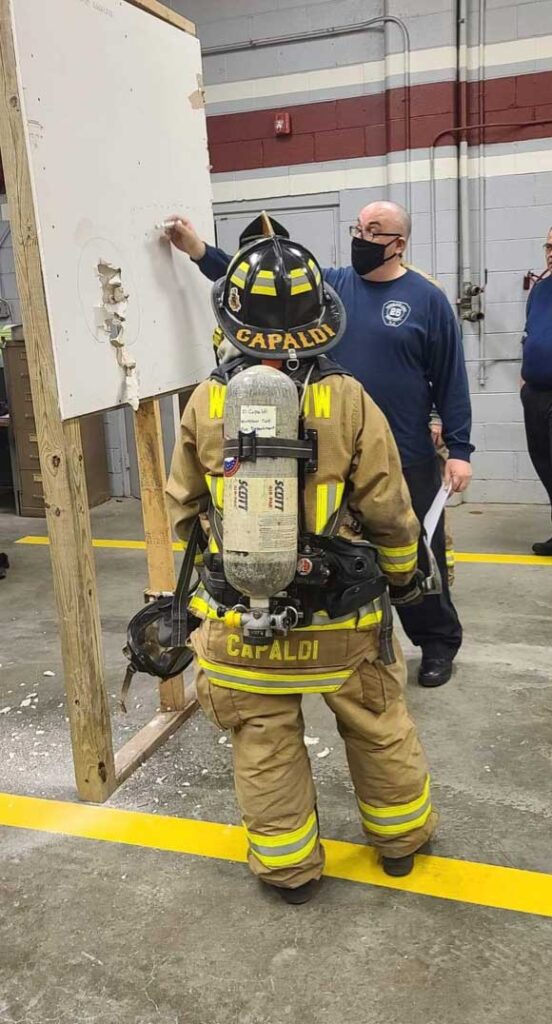
This method can also be used for ceilings. Now we incorporated taking the ceiling to gain access to the attic to check for extension. This adds other pieces of equipment to the drill. If firefighters got off the apparatus with the appropriate equipment, it would be on their person. (Photos 4-7.)
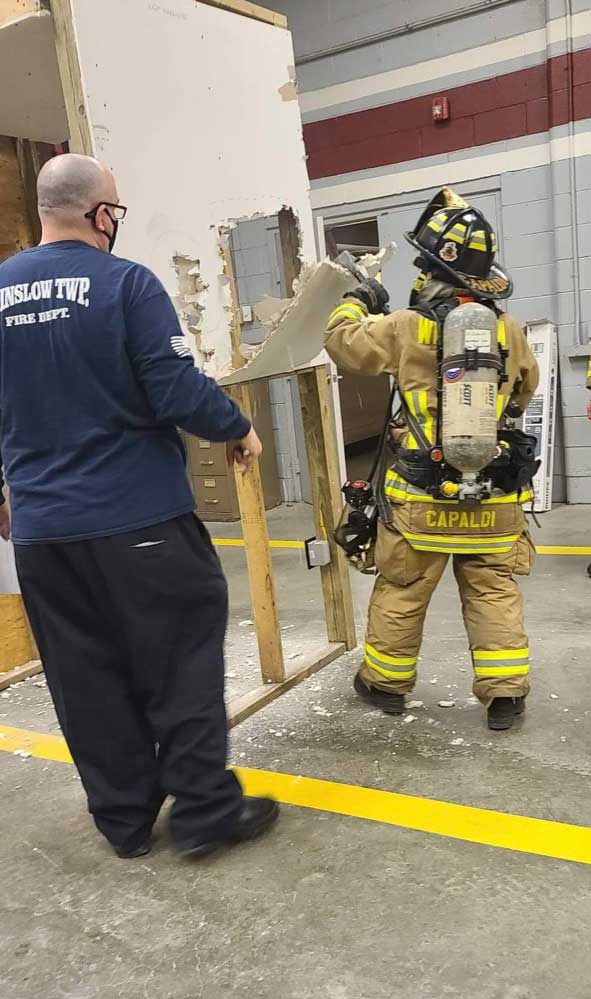
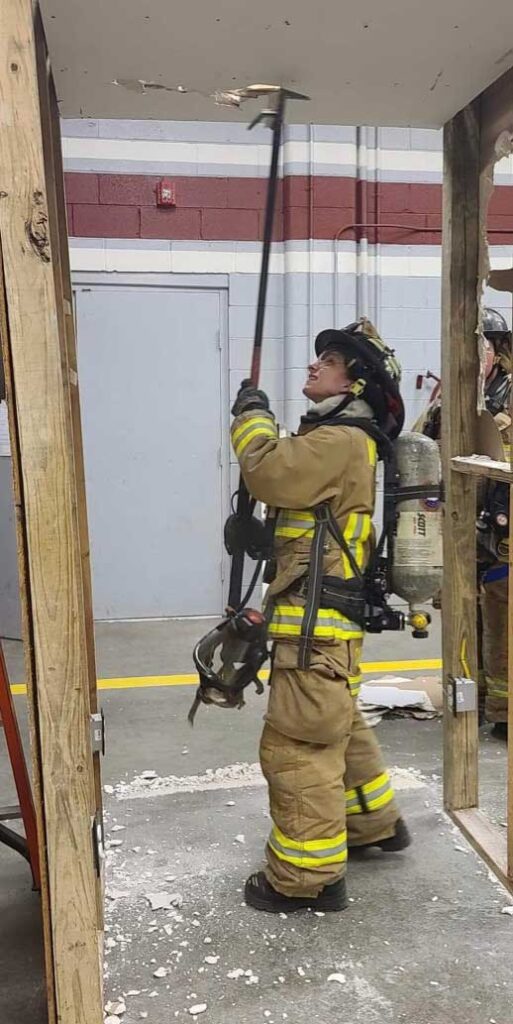

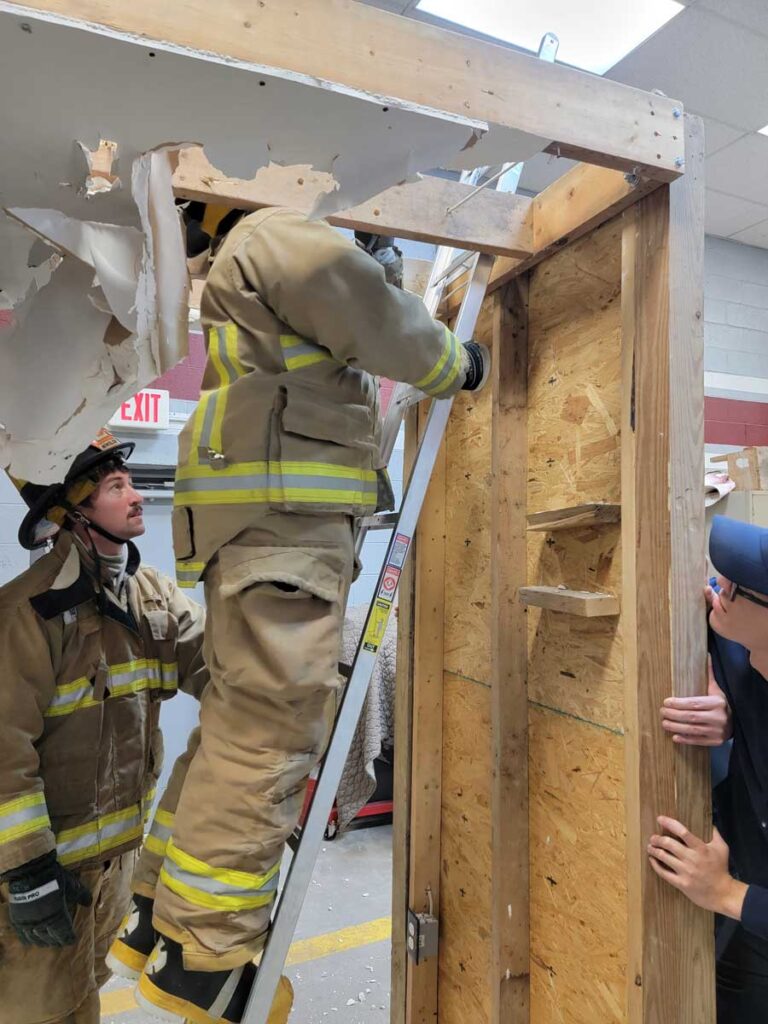
We added outlets and a breaker box to the prop also. This can assist firefighters with using and understanding outlets, breakers, and lock-out/tag-out equipment. The scenario drill was a sparking outlet call. The firefighter secures power to the room, uses the lock-out/tag-out equipment, then secures the sparking outlet. We are now using several pieces of equipment off the apparatus that are used infrequently. Prior to the hands-on drill, we reviewed the equipment in the electrical box and the lock-out/tag-out box. This gives the firefighters more knowledge and the trainer the opportunity to teach the standard operating guidelines and equipment familiarization. (Photos 8 and 9.)
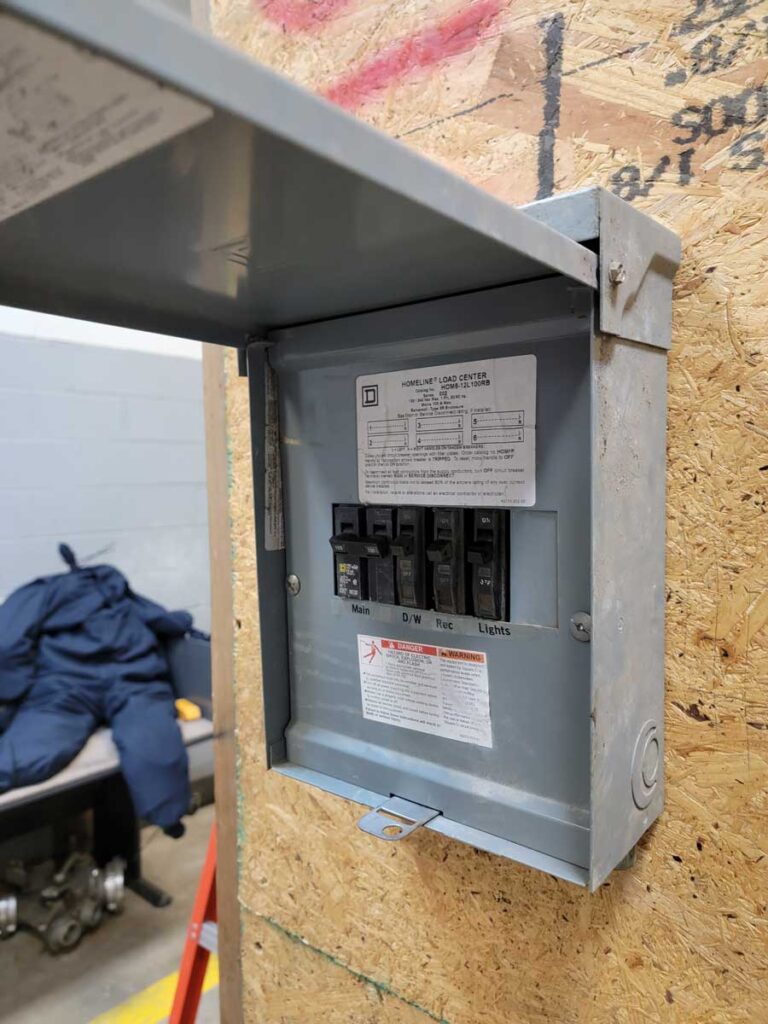

A smoke detector was added to the prop. This was used for the firefighter to check the detector to see if it is in date, to change batteries, and to install a detector off the apparatus if it was out of date. On our engine we have a smoke detector kit, with batteries, spare detectors, and paperwork for the homeowner. (Photos 10 and 11.)
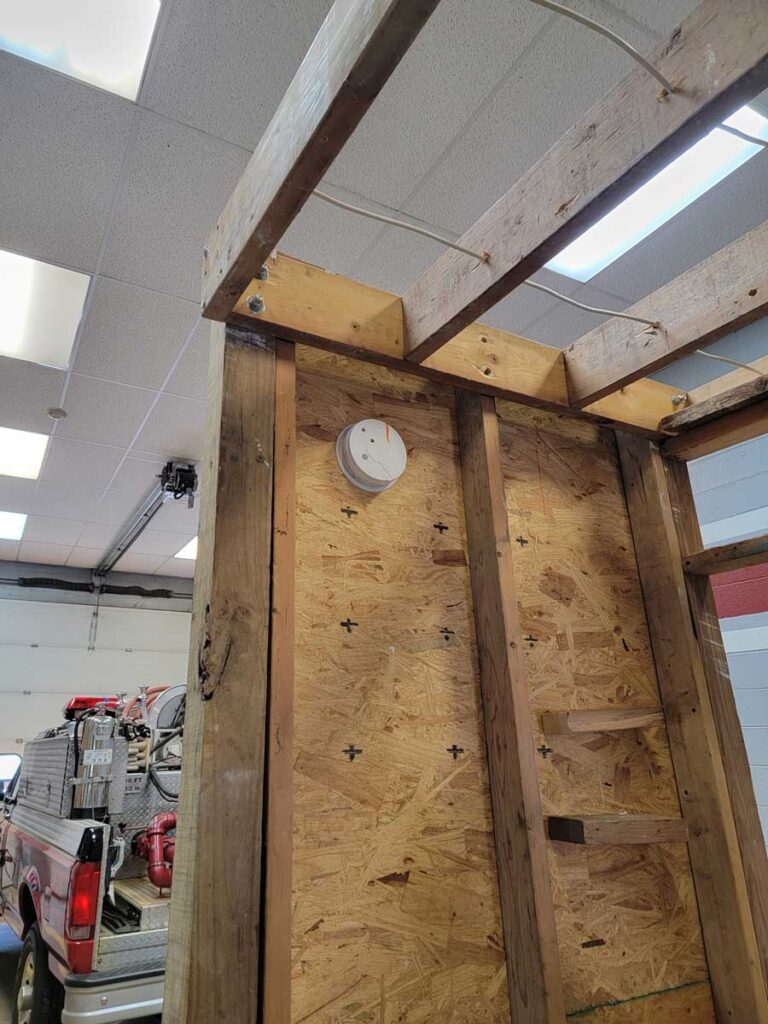
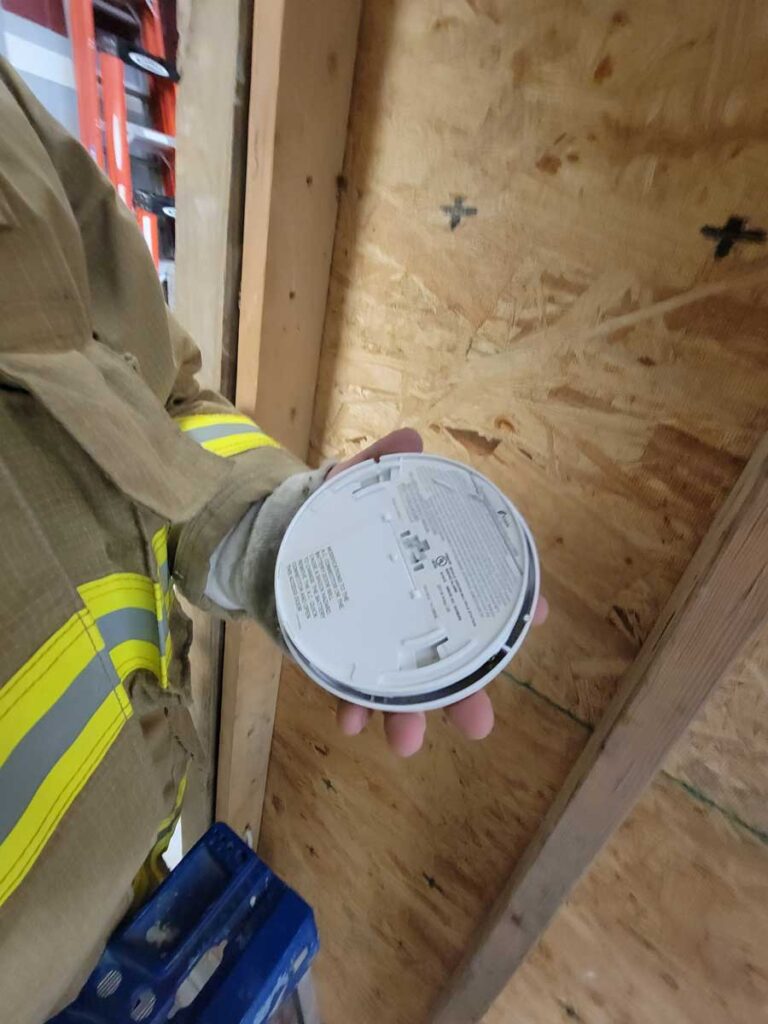
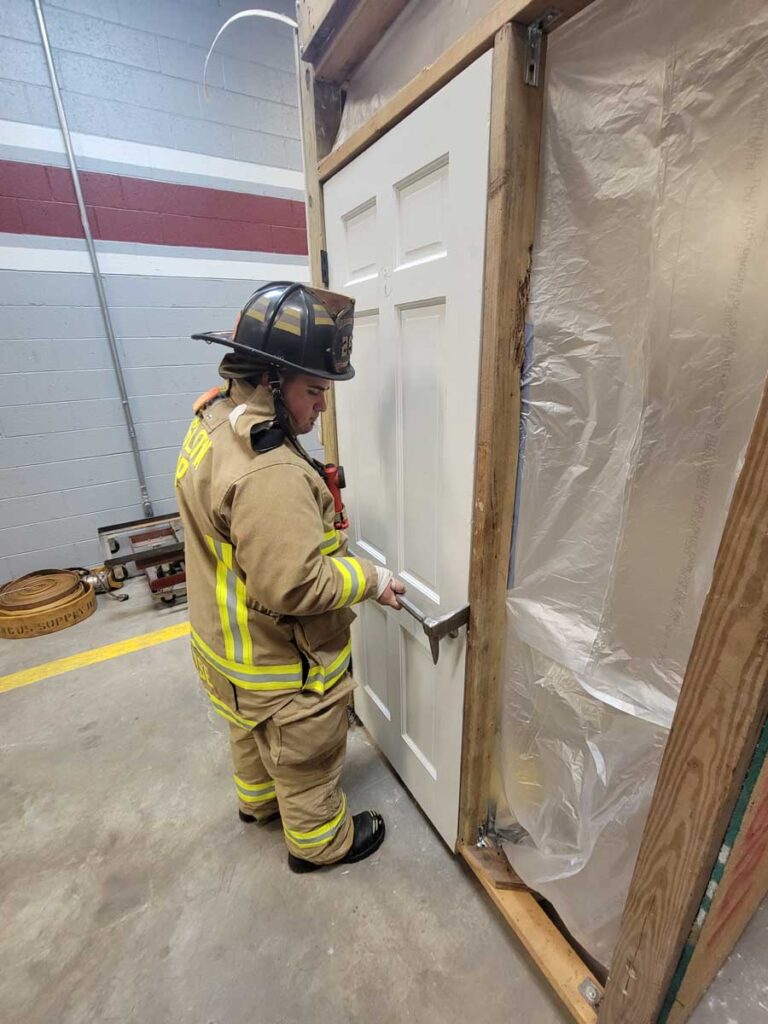
Firefighters perform the drill in three steps, first with just their personal protective equipment (PPE) on (see photo 12). This allows them to see what they are doing; the company officer or training officer can make corrections and adjust. Next, they perform the drill with PPE, self-contained breathing apparatus (SCBA), and everything they would get off the apparatus with. The second evolution gives the firefighter the familiarization of the equipment they are getting off the apparatus with according to their riding assignments. Finally, firefighters perform the drill as a scenario-based drill, literally getting off the apparatus in real time and are given the assignment from the incident commander. They can grab an attic ladder, don their SCBA, and enter the scenario, ready to perform the task given. This also allows the trainer to review and discuss standard operating guidelines (SOGs).
Please follow all your department’s training guidelines and SOGs before performing any of these drills.
Use all your experiences on calls to recreate the situations you have encountered in the past. These are great opportunities to educate your company or new firefighters. By sharing your experience, you can help new members rapidly acclimate to the job and prepare them for the various scenarios they will face on the fireground.
- Creating Firefighter Training Lesson Plans, Safety Plans, and Standard Operating Guidelines
- Hazmat and Railroad Emergency Training Resources
- Company-Level Hoseline Deployment Drills
- Top Free Firefighter Training Resources for Fire Instructors

William Off has been in the fire service for more than 15 years and works as a nurse at Virtua Mt. Holly Rehab. He began his career with the Hammonton (NJ) Fire Department and is a firefighter with Winslow Township Fire Department and Winslow Office of Emergency Management (OEM). He has served as an emergency medical technician in Atlantic City, New Jersey, and in addition to his New Jersey practical nursing license holds a number of certifications in fire, EMS, and OEM.

